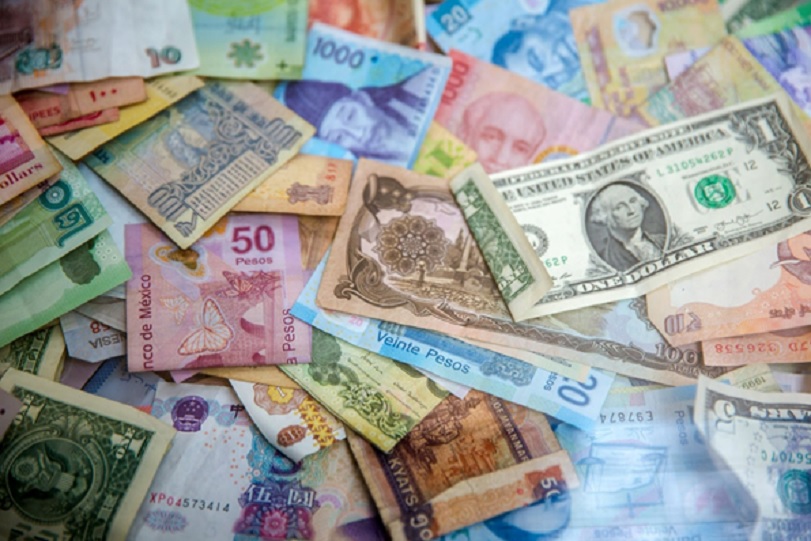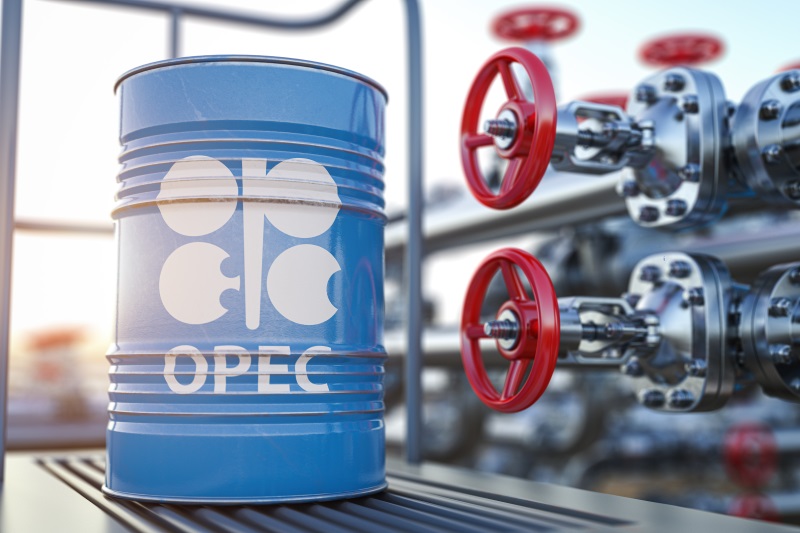Economy
What is the Strongest Currency in the World?

Explore the intricate factors shaping the world’s strongest currencies. Dive into economic indicators, historical shifts, and the double-edged sword of monetary might.
In the bustling world of finance, currency is king. But have you ever wondered which of these monetary sovereigns reigns supreme? To determine the world’s strongest currency, one must wade through a myriad of economic, political, and speculative factors. This article delves into the very heart of this topic, untangling the intricate web that defines a currency’s strength. Find out if is the euro expected to rise against the dollar.
The Elusive Nature of ‘Strength’
To begin, it’s crucial to discern between a currency’s value and its strength. A high value does not automatically denote strength. Consider, for example, the Zimbabwean dollar in the late 2000s. Though you might have held a trillion-dollar note, its purchasing power was close to nil.
Hence, our true measure lies in purchasing power parity (PPP) – a metric that considers the relative value of currencies based on the cost of goods and services they can purchase.
The Building Blocks of Currency Strength
The power of a currency is not determined in isolation. It’s a harmonious dance of various elements that dictate its potency on the global stage:
- Economic Indicators: Economic health is a predominant indicator. The GDP growth rate is a reflection of a nation’s economic activities. Healthy employment rates indicate a bustling economy where people are engaged productively. Interest rates, set by central banks, influence foreign investment and inflation. A low and stable inflation rate preserves the purchasing power of a currency, making it more attractive.
- Political Stability: Beyond economics, the political backdrop plays a crucial role. A country with stable governance, devoid of corruption and frequent political tumults, instills confidence among foreign investors. Stable policies also ensure that businesses can operate without fear of erratic regulatory changes.
- Market Speculation: The forex market, the largest financial market globally, operates round the clock. Traders, relying on economic forecasts, geopolitical scenarios, and other factors, make bets that influence currency values. In an age of instant communication, news (or even rumors) can lead to significant swings.
- Supply and Demand Dynamics: At its core, a currency’s value depends on its demand. Countries with robust exports, especially those in high demand globally, often see their currency values rising. A consistent positive trade balance signals a healthy economy, boosting a currency’s strength.
- Foreign Investment: When a nation attracts foreign capital, whether in its stock market, infrastructure, or other sectors, there’s an inherent demand for its currency. This influx of foreign capital bolsters the currency’s value.
- Central Bank Actions: Central banks wield enormous power over a country’s monetary health. Their interventions, either by tweaking interest rates or by direct market operations, can steer a currency’s trajectory. Furthermore, being designated as a global reserve currency, like the US dollar or the Euro, is a testimony to a currency’s strength.
The Heavyweights of Currency World
When we talk about the titans in the currency realm, several names stand tall, each bolstered by its unique set of economic strengths and geopolitical standings:
- The Kuwaiti Dinar: Topping the list is this Middle Eastern powerhouse. Kuwait’s vast oil reserves, coupled with strategic exports and a small, concentrated population, have granted the dinar unparalleled purchasing power. Its economy, intricately tied to hydrocarbon industries, has shielded it from excessive fluctuations, making it a bastion of stability in the region.
- The Bahraini Dinar: Tiny in size but mighty in financial clout, Bahrain is a hub for banking and finance in the Middle East. This, combined with its efforts in diversifying its economy and maintaining stable governance, has kept the Bahraini dinar high on the list.
- The Omani Rial: Beyond its natural oil wealth, Oman’s advantageous position along key trade routes and its consistently neutral political stances in regional disputes have made its currency a beacon of resilience.
- The Swiss Franc: Nestled in the heart of Europe, Switzerland’s commitment to financial secrecy, a robust banking sector, and a tradition of political neutrality have allowed the Swiss Franc to be a sought-after safe-haven currency for investors worldwide.
- The Euro: As the unified voice of multiple European economies, the Euro’s strength is a testament to collaboration. It’s backed not only by the robust economies of countries like Germany and France but also by the collective fiscal and monetary policies of the European Central Bank.
A Journey Through Time
The annals of history are littered with tales of currencies that once held the world in their grip. The British pound sterling, for instance, echoed the vastness of the British Empire upon which “the sun never set.”
Its dominance waned post-World War II, making way for the US dollar, bolstered by the United States’ economic boom and the Bretton Woods Agreement. As geopolitical shifts continue and emerging markets rise, the narrative of dominant currencies remains an evolving tapestry of power, influence, and global strategy.
The Double-Edged Sword of Strength
A strong currency, while a mark of economic prowess, comes with its set of intricacies. The allure of heightened purchasing power means imported goods, from electronics to luxury items, become more affordable for citizens.
This often leads to increased consumption, better standards of living, and a positive image on the global stage, potentially attracting foreign investors looking for stable economies to invest in.
However, this strength isn’t without its pitfalls. For nations whose economies lean heavily on exports, a powerful currency can be a stumbling block. It makes their goods more expensive for foreign buyers, potentially leading to reduced demand and impacting industries reliant on overseas markets.
Moreover, tourism, a significant revenue source for many countries, can take a hit as tourists might favor destinations where their home currency stretches further.

Conclusion
The dynamics of currency strength serve as a riveting reflection of global economic trends, political maneuvers, and collective aspirations of nations. While certain currencies currently revel in their dominant positions, history and the inherent volatility of the global economy ensure that this hierarchy is fluid.
Tomorrow’s financial landscape might bear witness to new contenders or a resurgence of erstwhile powerhouses.
Navigating this ever-shifting terrain requires not just understanding the present indicators but also an appreciation for historical patterns and an anticipation of future trends. For nations, businesses, and individual investors, the world of currency isn’t just about numbers—it’s a strategic game of chess on the global board.
Economy
Again, OPEC Cuts 2024, 2025 Oil Demand Forecasts

By Adedapo Adesanya
The Organisation of the Petroleum Exporting Countries (OPEC) has once again trimmed its 2024 and 2025 oil demand growth forecasts.
The bloc made this in its latest monthly oil market report for December 2024.
The 2024 world oil demand growth forecast is now put at 1.61 million barrels per day from the previous 1.82 million barrels per day.
For 2025, OPEC says the world oil demand growth forecast is now at 1.45 million barrels per day, which is 900,000 barrels per day lower than the 1.54 million barrels per day earlier quoted.
On the changes, the group said that the downgrade for this year owes to more bearish data received in the third quarter of 2024 while the projections for next year relate to the potential impact that will arise from US tariffs.
The oil cartel had kept the 2024 outlook unchanged until August, a view it had first taken in July 2023.
OPEC and its wider group of allies known as OPEC+ earlier this month delayed its plan to start raising output until April 2025 against a backdrop of falling prices.
Eight OPEC+ member countries – Saudi Arabia, Russia, Iraq, United Arab Emirates, Kuwait, Kazakhstan, Algeria, and Oman – decided to extend additional crude oil production cuts adopted in April 2023 and November 2023, due to weak demand and booming production outside the group.
In April 2023, these OPEC+ countries decided to reduce their oil production by over 1.65 million barrels per day as of May 2023 until the end of 2023. These production cuts were later extended to the end of 2024 and will now be extended until the end of December 2026.
In addition, in November 2023, these producers had agreed to voluntary output cuts totalling about 2.2 million barrels per day for the first quarter of 2024, in order to support prices and stabilise the market.
These additional production cuts were extended to the end of 2024 and will now be extended to the end of March 2025; they will then be gradually phased out on a monthly basis until the end of September 2026.
Members have made a series of deep output cuts since late 2022.
They are currently cutting output by a total of 5.86 million barrels per day, or about 5.7 per cent of global demand. Russia also announced plans to reduce its production by an extra 471,000 barrels per day in June 2024.
Economy
Aradel Holdings Acquires Equity Stake in Chappal Energies

By Aduragbemi Omiyale
A minority equity stake in Chappal Energies Mauritius Limited has been acquired by a Nigerian energy firm, Aradel Holdings Plc.
This deal came a few days after Chappal Energies purchased a 53.85 per cent equity stake in Equinor Nigeria Energy Company Limited (ENEC).
Chappal Energies went into the deal with Equinor to take part in the oil and gas lease OML 128, including the unitised 20.21 per cent stake in the Agbami oil field, operated by Chevron.
Since production started in 2008, the Agbami field has produced more than one billion barrels of oil, creating value for Nigerian society and various stakeholders.
As part of the deal, Chappal will assume the operatorship of OML 129, which includes several significant prospects and undeveloped discoveries (Nnwa, Bilah and Sehki).
The Nnwa discovery is part of the giant Nnwa-Doro field, a major gas resource with significant potential to deliver value for Nigeria.
In a separate transaction, on July 17, 2024, Chappal and Total Energies sealed an SPA for the acquisition by Chappal of 10 per cent of the SPDC JV.
The relevant parties to this transaction are working towards closing out this transaction and Ministerial Approval and NNPC consent to accede to the Joint Operating Agreement have been obtained.
“This acquisition is in line with diversifying our asset base, deepening our gas competencies and gaining access to offshore basins using low-risk approaches.
“We recognise the strategic role of gas in Nigeria’s energy future and are happy to expand our equity holding in this critical resource.
“We are committed to the cause of developing the significant value inherent in the assets, which will be extremely beneficial to the country.
“Aradel hopes to bring its proven execution competencies to bear in supporting Chappal’s development of these opportunities,” the chief executive of Aradel Holdings, Mr Adegbite Falade, stated.
Economy
Afriland Properties Lifts NASD OTC Securities Exchange by 0.04%

By Adedapo Adesanya
Afriland Properties Plc helped the NASD Over-the-Counter (OTC) Securities Exchange record a 0.04 per cent gain on Tuesday, December 10 as the share price of the property investment rose by 34 Kobo to N16.94 per unit from the preceding day’s N16.60 per unit.
As a result of this, the market capitalisation of the bourse went up by N380 million to remain relatively unchanged at N1.056 trillion like the previous trading day.
But the NASD Unlisted Security Index (NSI) closed higher at 3,014.36 points after it recorded an addition of 1.09 points to Monday’s closing value of 3,013.27 points.
The NASD OTC securities exchange recorded a price loser and it was Geo-Fluids Plc, which went down by 2 Kobo to close at N3.93 per share, in contrast to the preceding day’s N3.95 per share.
During the trading session, the volume of securities bought and sold by investors increased by 95.8 per cent to 2.4 million units from the 1.2 million securities traded in the preceding session.
However, the value of shares traded yesterday slumped by 3.7 per cent to N4.9 million from the N5.07 million recorded a day earlier, as the number of deals surged by 27.3 per cent to 14 deals from 11 deals.
Geo-Fluids Plc remained the most active stock by volume (year-to-date) with 1.7 billion units sold for N3.9 billion, trailed by Okitipupa Plc with 752.2 million units valued at N7.8 billion, and Afriland Properties Plc with 297.5 million units worth N5.3 million.
Also, Aradel Holdings Plc remained the most active stock by value (year-to-date) with 108.7 million units worth N89.2 billion, followed by Okitipupa Plc with 752.2 million units valued at N7.8 billion, and Afriland Properties Plc with 297.5 million units sold for N5.3 billion.
-

 Feature/OPED5 years ago
Feature/OPED5 years agoDavos was Different this year
-
Travel/Tourism8 years ago
Lagos Seals Western Lodge Hotel In Ikorodu
-

 Showbiz2 years ago
Showbiz2 years agoEstranged Lover Releases Videos of Empress Njamah Bathing
-

 Banking6 years ago
Banking6 years agoSort Codes of GTBank Branches in Nigeria
-

 Economy2 years ago
Economy2 years agoSubsidy Removal: CNG at N130 Per Litre Cheaper Than Petrol—IPMAN
-

 Banking2 years ago
Banking2 years agoFirst Bank Announces Planned Downtime
-

 Sports2 years ago
Sports2 years agoHighest Paid Nigerian Footballer – How Much Do Nigerian Footballers Earn
-

 Technology4 years ago
Technology4 years agoHow To Link Your MTN, Airtel, Glo, 9mobile Lines to NIN
















